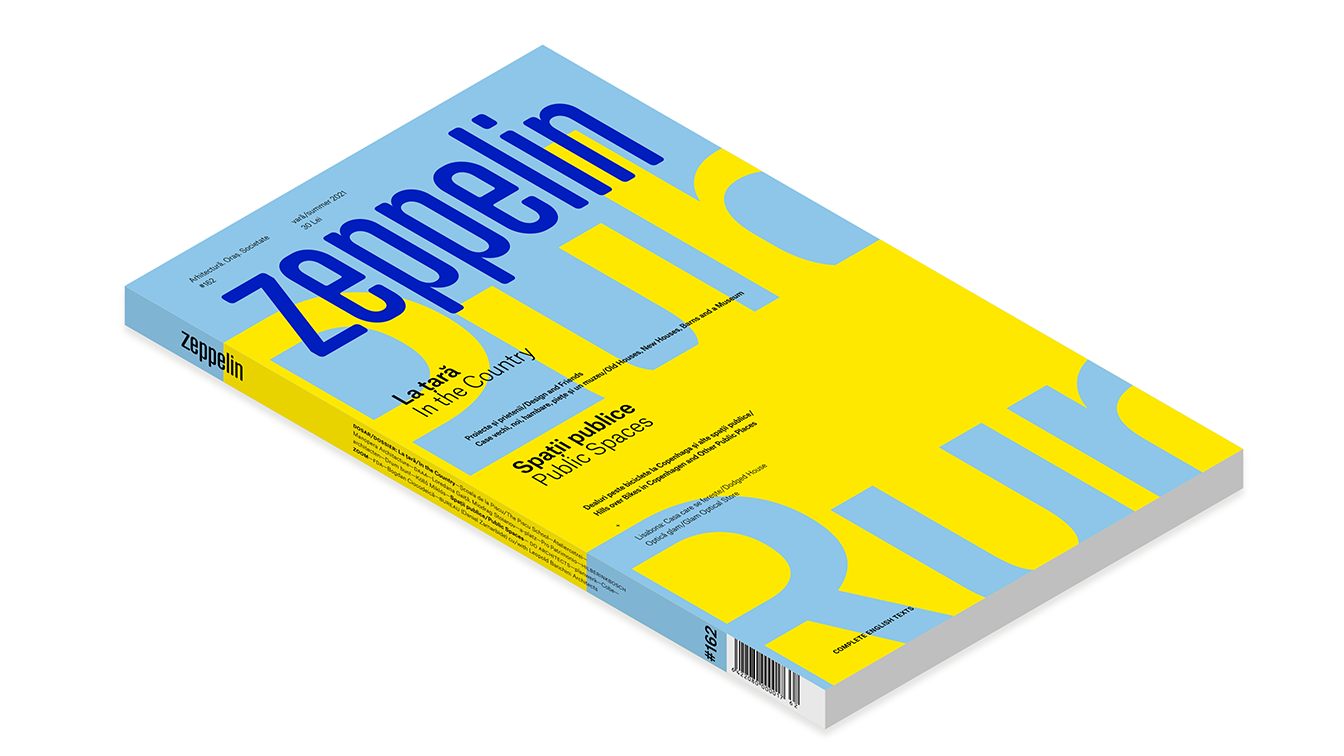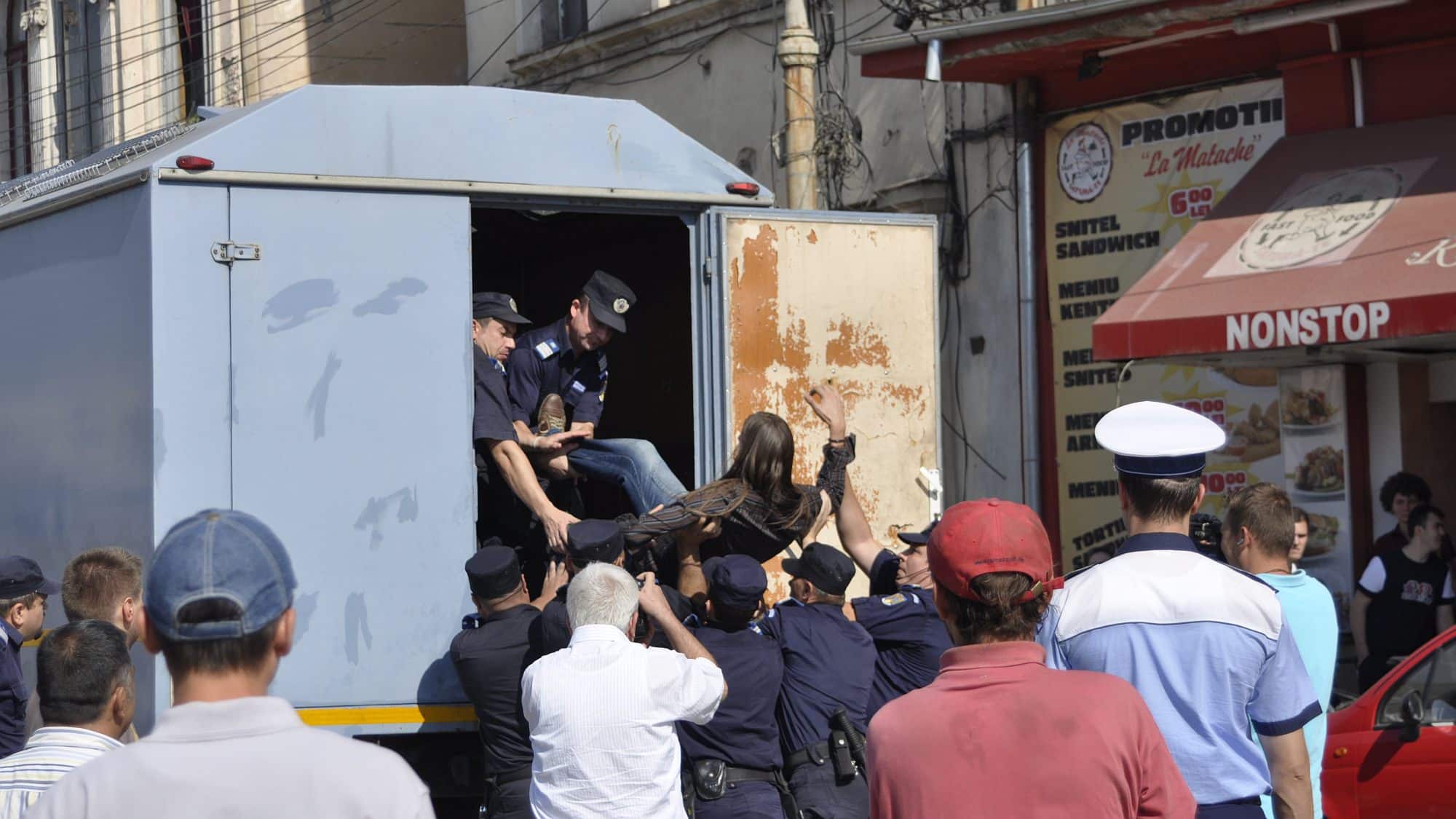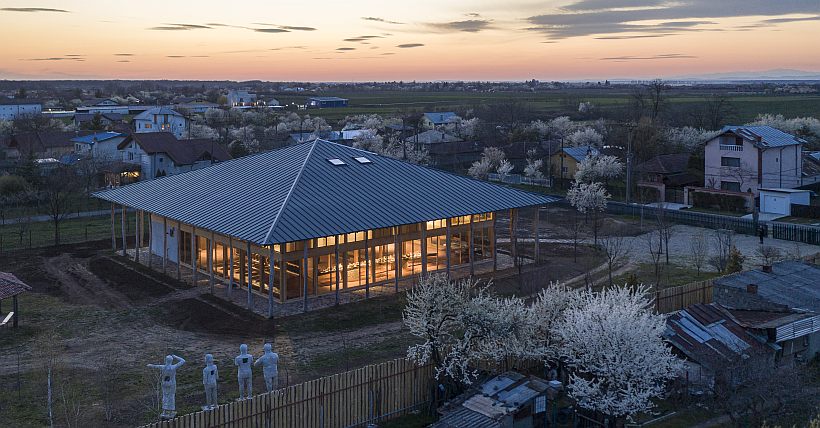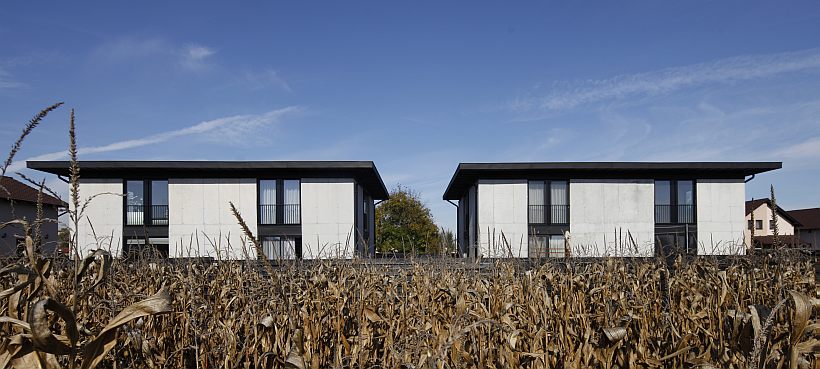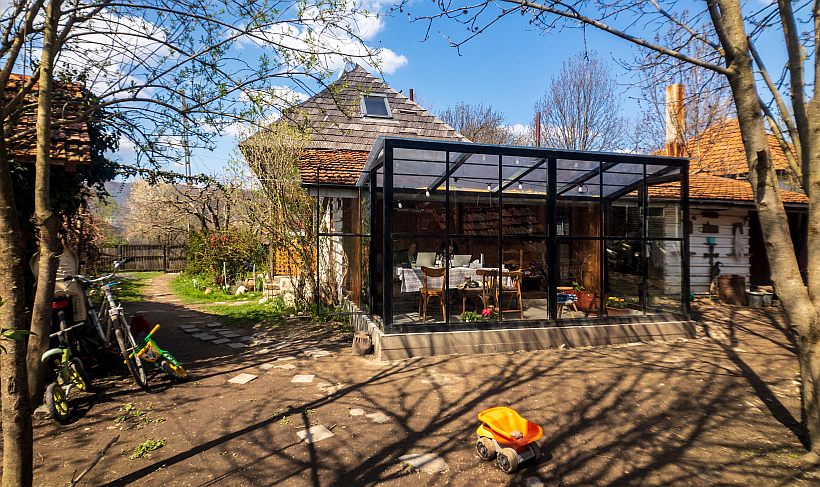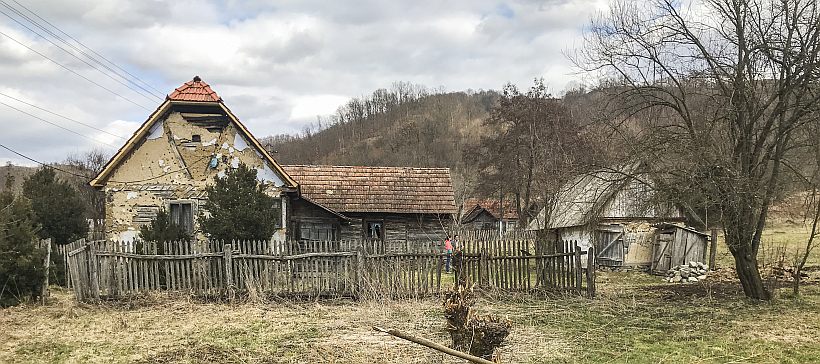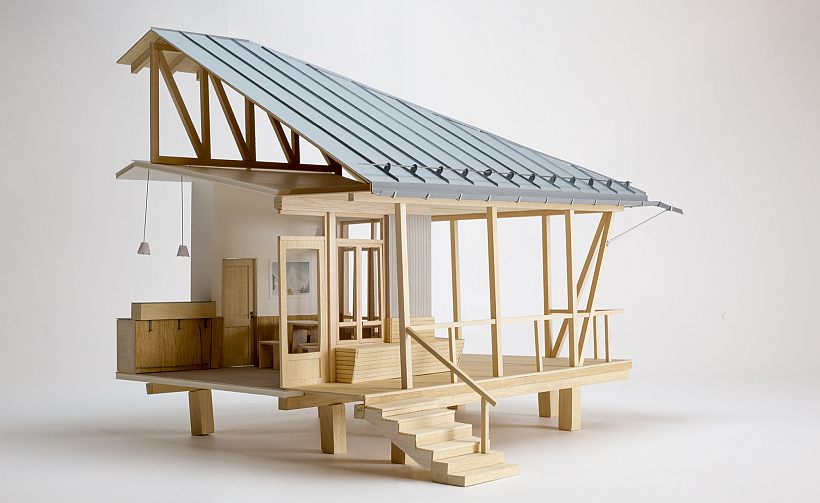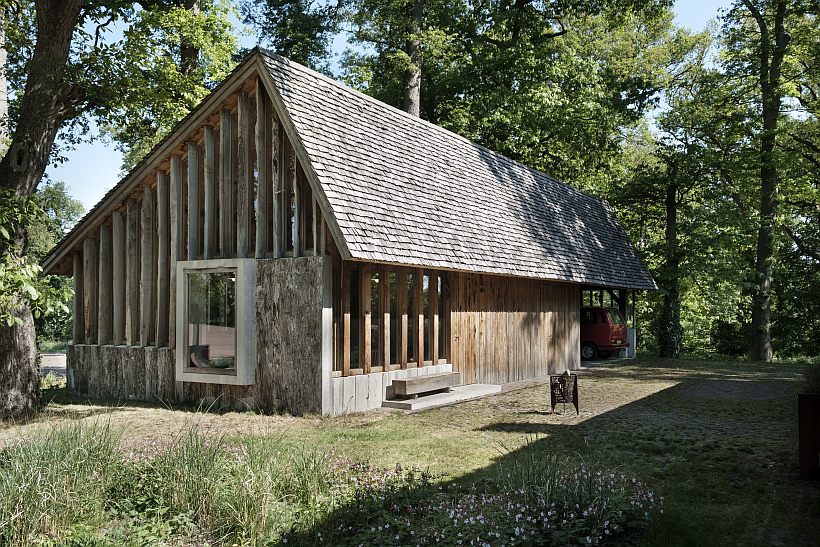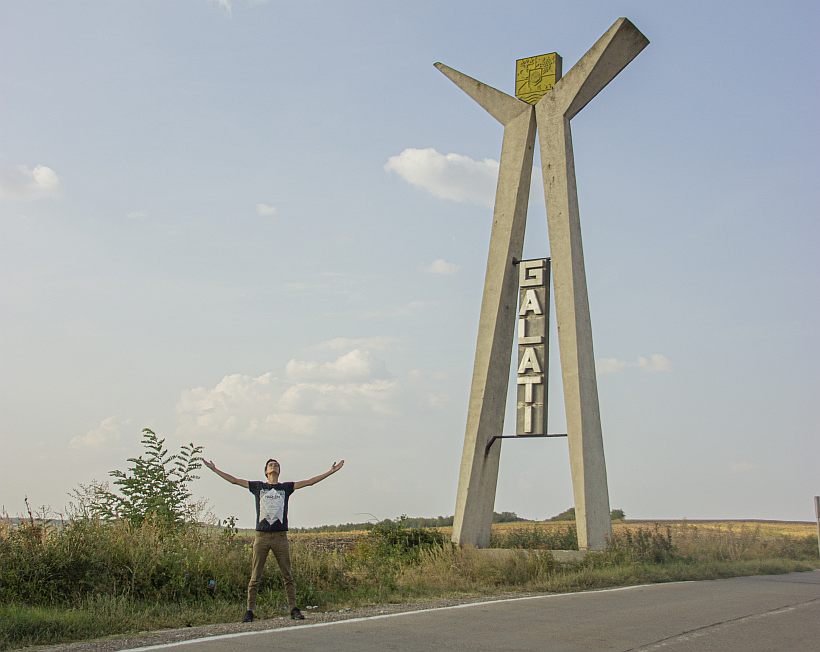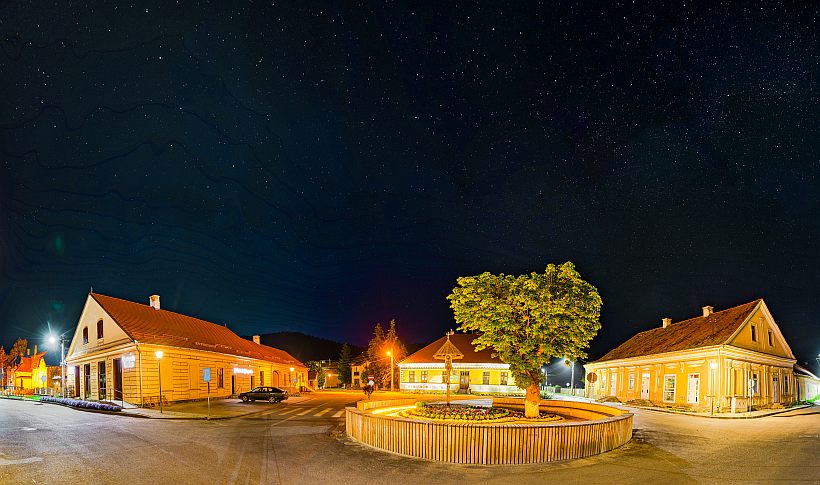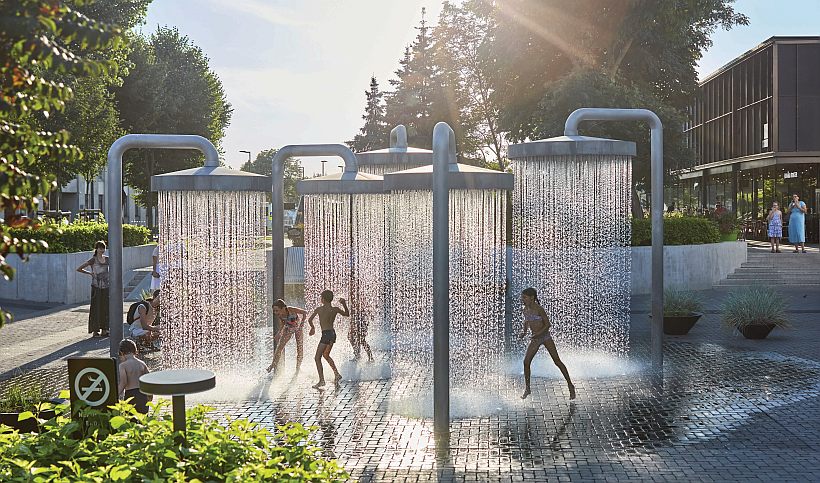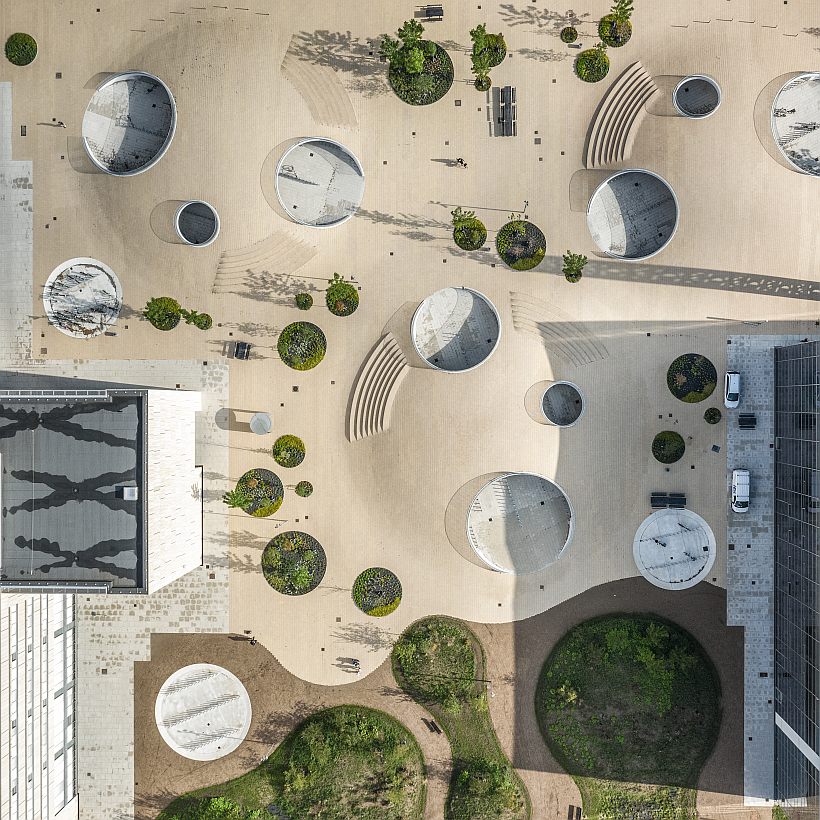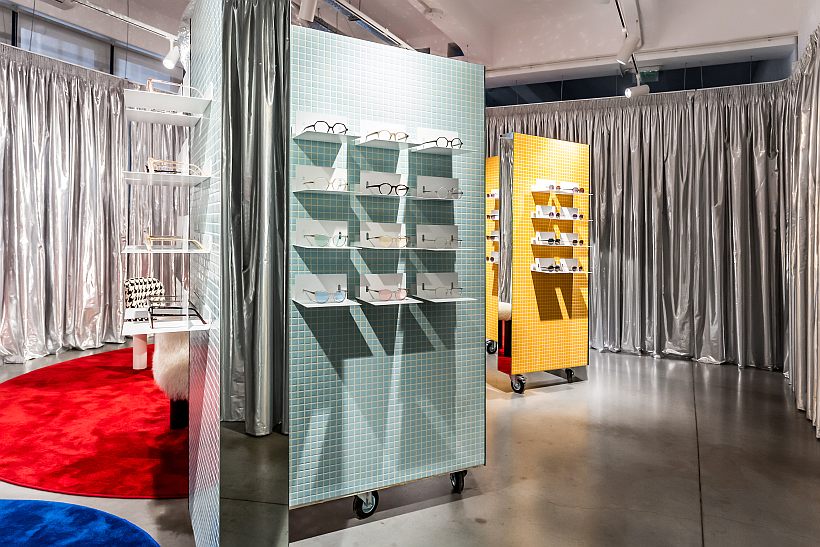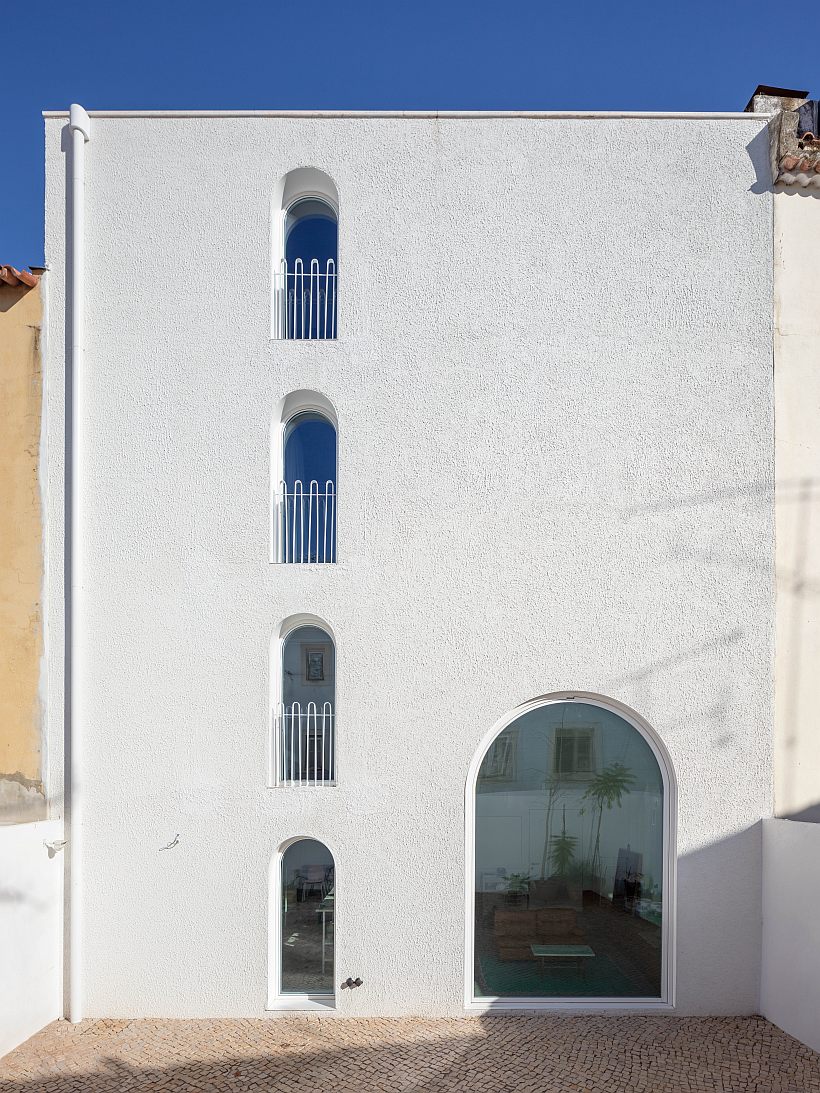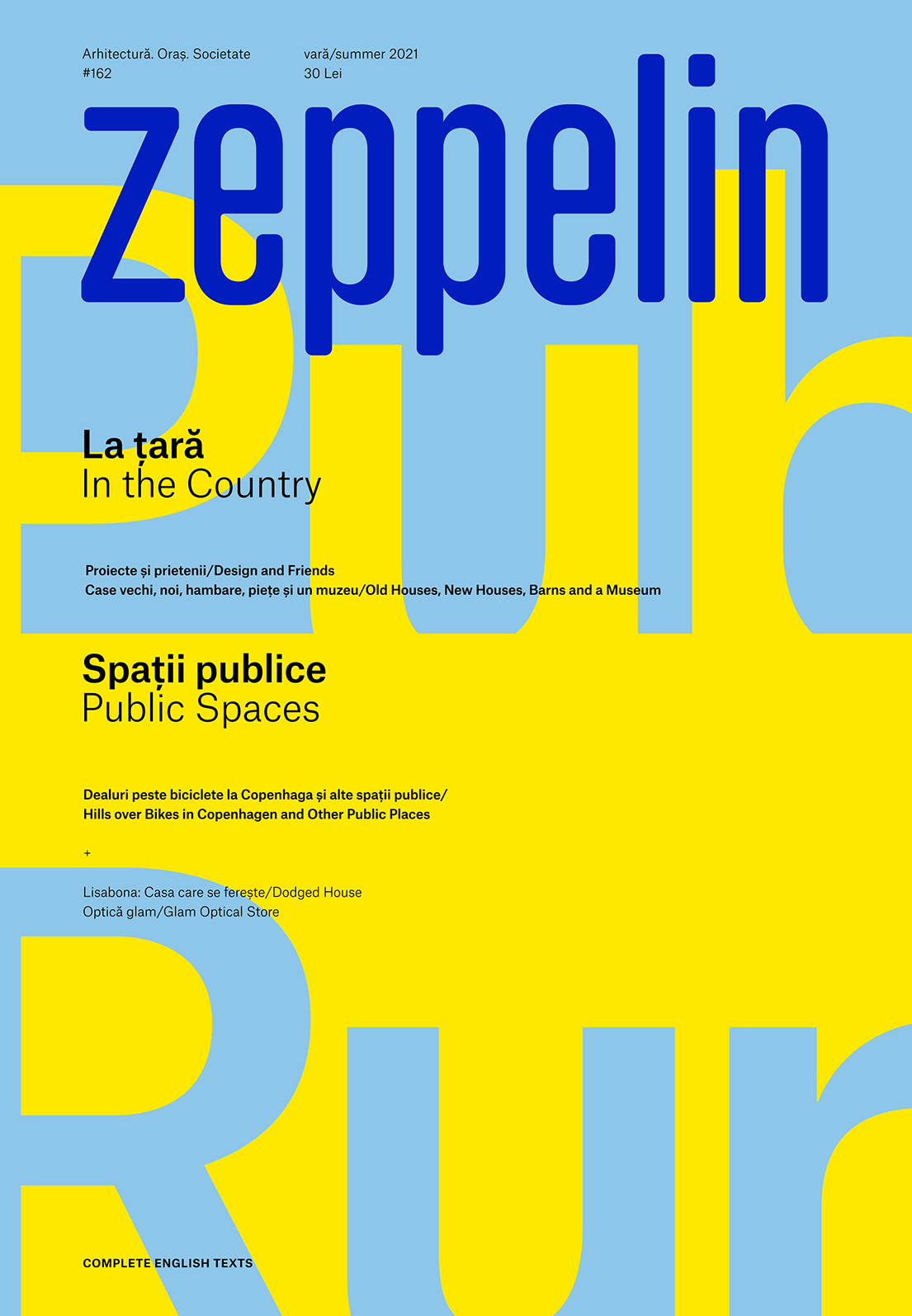Editorial: 37 meters and 20 centimeters
Text: Mugur Grosu
Photo: Alexandru Oglindă
Six Frenchmen get off the plane and start following a bunch of football fans, thinking they will lead them to the stadium. They reach a pub in the old town where the others start drinking. A couple of beers later they realize that the supporters were not Hungarians but Ukrainians, and what they thought was Budapest was in fact another capital that had once dreamed itself to be Little Paris (…)
DOSIER: Rural
Intro:
The Countryside. Introduction
Coordinators: Cătălina Frâncu, Ştefan Ghenciulescu
The Piscu School Museum and Atelier Piscu experience
Text: Ştefan Ghenciulescu, Cosmin Pavel, Mihnea Simiraş
Photo: Laurian Ghiniţoiu & echipa proiectului
A place of discreet worth. A generous dream. A student project. And then a real one. The mu¬seum in Piscu village is the result of an individ¬ual initiative and of a good mix between work, teaching, heritage and a modern vision
Viila Cheia, Cluj County
Text: Paul Mihai Moldovan, Anamaria Moldovan
Photo: Ovidiu Micşa
The guest house acts simultaneously as steady object and element of the landscape, as mod¬ern construction and reinterpretation of archaic gestures and places.
The Wood House
Manopera Architecture: Housing, Ciurila, Cluj
Text: Raluca Sabău, Romeo Cuc
Photo: Eliza Jurca
The wood house project is proof of a vision claiming that new inter¬ventions in the rural environment can be contemporary and gen¬tle, too, and that they need to work with of today’s life, in the same way as old households used to an¬swer to the naturalness of life in their own time.
2/4 Concrete Houses
Manopera Architecture: Semi‑detached Houses, Târgu‑Mureş
Text; Romeo Cuc, Raluca Sabău
Photo: Eliza Jurca
Normalcy, symmetry, simplici¬ty, structural logic, and an honest materiality: the project tests the limits of clichés about dwelling at the edge of a city, and attempts to partially erase the strict lines between the public and the pri¬vate space, so that it can turn into “home” for 4 families.
Le Shack
DAAA: Extending the Extension to a Peasant House
Text: Simina Dron
Poto: Antonia Pruteanu, Raul Dan Ardelean
Saint Friday Cottage is the story of a place and of some people—a place in the countryside, close to the spectacular “Transfăgărășan” mountain road. Some good people retreat¬ed from Bucharest, to their inherited family house, sporting a porch and a garden. They refurbished and laid it out as a home for them and their 2 children, on the ground floor, and as guest accommodation, in the attic.
2020 scared away foreign tourists (which had been their bulk business) but triggered an avalanche of accom¬modation requests from Bucharest dwellers just com¬ing out of lockdown. As compared to all the previous years, when the season would end of its own accord with the clo¬sure of the Transfăgărășan, the need for fresh air and for a city break continued at the same pace even when the weather cooled down. It was thus necessary to create a separate space, where the guests could dine, protected from the wind, rain and cold (…)
The New Life of the Roşia Nouă Homestead
Project, Text & Photo: Loredana Gaiţă, Miodrag Stoianov
A traditional farm in Arad County, in the area around the MureșRiver, was transformed to re¬ceive groups of friends, sportspeople, scouts, and to host varied activities.
Ski Pavilion, Piricica/Piricske, Harghita
a‑platz
Text: a‑platz
Photo: a‑platz, Szigeti Vajk István (clădire), Antoine Séguin (machetă)
Located 10 km from Miercurea Ciuc, in the heart of the Harghita mountains, this project responds to a specific re¬quest: the design of a pavilion for families and children at the base of the ski slope.
Simplicity lies at the heart of the project. We im¬agined a pavilion that can be used all around the seasons, with a large porchon its whole perimeter, to be used in a free and spontaneous ways. (…)
The Wooden Church of Urşi Village
A Microhistory of Restoration within the Local Community (2009–2020)
Text Mirela Duculescu, Raluca Munteanu
Photo: Mihai Bodea, Camil Iamandescu, Thomas Laschon, Pro Patrimonio
Sixteen Oak Barn
HILBERINKBOSCH architecten: An Oak Extension of a Modular Traditional Farmhouse, Hilberinkbosch
Text: HILBERINKBOSCH architecten
Photo: René de Wit, Breda/Inga Powilleit, Haarlem
Traditionally, most farmhouses in the Meierij of Hertogen¬bosch, a former administrative realm or bailiwick, have their separate parts—living quarters, storage space and cow¬sheds—integrated into a single building. Over time, how¬ever, these compact buildings frequently would become too cramped to house all of these functions and a separate barn would be added. These were usually built from locally available materials and largely followed the structural pat¬tern of the farmhouses themselves.
In 2017 we were told that seven of the century old oak trees in our yard were in bad shape. They had to be cut down. Instead of following the usual path and selling the trees to the paper industry, we decided to reinstate an an¬cient tradition. And so, by replacing a collage of obsolete shelters and sheds, we would, in line with our farm’s mon¬umental character, build a new barn with locally harvested materials employing traditional techniques. Adding a cou¬ple of oak tree trunks we obtained from the nearby Wam¬berg estate, we had enough timber to construct the new barn from cut down trees. (…)
Have a Good Trip!
Text: Jakub Charousek, Roberta Curcă
The Czech Centre Bucharest started the Instagram project called Protect Public Space in 2017, back then under the lead of František Zachoval. In the beggining the project was very uncurated, mainly due to the fact that we were just getting to know Romania more and we were fascinated by all possible, more or less bizarre structures. One of the rem¬nants of these times is definitely Nr. 17 on the map, the ven¬tilation shaft of the Municipal Stadium from Pitesti. Never¬theless, we were also inspired and influenced by the Aliens and Herons project done by Pavel Karous, Czech sculptor and pedagogue.
The Aliens and Herons project maps plastic art in public areas which was made in the 70´s and the 80´s in Czechoslovakia, or how Karous calls it the „4% Art.“ At that time, Czechoslovakian legislation would oblige eve¬ry state funded contruction project to spend 1–4% of the budget on decorating and cultivating the public space around, therefore kindergartens, schools, hospitals, admin¬istrative buildings and large infrastructure projects such as bridges or highways would be surrounded by art.
Inspired by Aliens and Herons, we started to make our Pro¬tect Public Space project more cohesive and it was just a matter of time before we would transform the exclusive¬ly online Instagram project into something material as well. (…)
Rural (Sur)faces
Text: Köllő Miklós
Photo: Szigeti Vajk‑István, Lukács Géza
Köllő Miklós and his team (Larix Stido) are the authors of several works published in our mag¬azine. About all of of these works are in the Székler Country in Transylvania and most of them in the countryside. Miklós himself lives with his family in his ancestral home in Ciuma¬ni village. We asked him to write a bit about the rural and about architecture, but mostly about things outside architecture or, apparently, be¬yond architecture. Several small public projects accompany this text. (Zeppelin)
DOSSIER: Spații publice/public spaces
Intro
Text: DO ARCHITECTS
Photo: Norbert Tukaj, DO ARCHITECTS
This short dossier starts in fact before the introduction you are just reading. The opinion piece on rural space and the recent works of the Larix Studio closes the dossier on vil¬lage architecture; it also includes a public space project, one of the most persecuted programs in a rural world that has to deal with underfunding, migration and abandonment, but also with individual interests and poor civic association.
Unsurprisingly, the Romanian city deals with similar issues: public space is the hunting ground where we all clash to¬gether, a shapeless mass from which morsels are grabbed or abandoned. To this we add a type of urbanism that works mainly for individual private interests or for the pride and delusional fantasies of the city mayors, and what we get is the harsh reality of the Romanian cities.
A seemingly modest project, easy going but sensitive, such as the street transformed by Planwerk in Cluj, is for the time being an exception that we believe should become an urgent model of good practice.
We also have two international examples, with an impor¬tant theme and an equally relevant interpretation
Urbanizing the Non‑urban
DO ARCHITECTS: Ogmia City Public Space Conversion, Vilnius
Text: DO ARCHITECTS
Foto: Norbert Tukaj, DO ARCHITECTS
Ogmia City is a multifunctional complex located in the northern part of Vilnius Ogmia, evolving from an under‑utilized outlet center to fully fledged and fully integrated city quarter. This enormous 12‑hectare territory, located only a few kilometers from the centre of Vilnius, has until very recently been largely overlooked by locals and visitors alike—merely a destination for bargain‑hunters and homemakers—certainly not an attractive place to go and enjoy your leisure time.
The structural changes that have transformed Ogmia City area into an ‘open air’ shopping centre, were based on the principles of the formation of the historic city centre, where the streets are the highest quality public spaces. Here too, streets, squares, footpaths and parks together create a view of the city within a city. And like a city, territory is an endless work in progress—it will continue to grow and evolve organically.
The design ensures that a pedestrian‑friendly environment is prioritized, (…)
Molnar Piuariu Street, Cluj
planwerk
Text & Photo planwerk arhitectură şi urbanism

The figures below are usually present in our „Credits” sec¬tion. We showed them here because, as dry as they may seem, they do express quite well the purpose and the fun¬damental character of the project; total area: 4.000 sqm; pedestrian surface increase: +124%; road surface decrease: −55%; green area increase: +151%; planted trees: 48. The transformation from the usual and appalling state of Romanian public space to decency and urbanity is so profound, that you cannot speak just about some technical prowess, that would somehow precede architecture. Hwre, the technique actually means planning skills, spatial re thinking, economy of means, creative strategy. To which, of course, some design is added. (Ștefan Ghenciulescu)
Hills over Bikes
Cobe: Karen Blixen Plads, Copenhagen
Text: Cobe
Foto/Photo: Rasmus Hjortshøj – COAST
At more than 20,000 m2, Karen Blixens Plads is one of the largest public squares in Copenhagen. The project was supported by a generous donation from the private Danish foundation A.P. Møller Fonden. Situated between the Uni¬versity of Copenhagen and the Royal Danish Library at the university’s campus, the combined public square and uni¬versity plaza is designed as a carpet that covers an undulat¬ing terrain of small hills and breaks the large space up into smaller zones with room for activities both on and inside the hills. The three bicycle hills were created as cast concrete shells clad with
ZOOM
Between Street and Water
Text: Alina Măldărescu
Photo: Cosmin Dragomir
The context is pragmatic: in Voluntari, in an area with in¬tensive building, there is an elongated site, adjacent to the street and in direct connection with the water on the opposite side. The first gesture, however, consciously contradicts the temptation to place a long bar, perpendicular to the street. The project assumes its reinterpretation of the relationship that a construction has with the public space. To live, to travel, to do, to tinker; activities that involve in theory a spatial delimitation but that translate into the reality experienced through an unclear limit. Here is therefore the proposition of a placement on the lot that becomes a filter between the outside and the inside world. (…)
Not Your Usual Shop
Bogdan Ciocodeică: Lunet Eyewear Signature Store
Text: Bogdan Ciocodeică
Foto/Photo: Kinga Tomos
Opening a store—any kind of store—in this day and age it is still a brave endeavour. But for Lunet Eyewear this is in a way a natural evolution. They started in 2019 as an on¬line business, and, during the pandemic, they went for a hybrid relation with their clients: one could order for free models, try them at home (“Home Try On” is the actual name of the platform) and then purchase at will. Therefore, starting their first signature store is a logical development. The brief asked for a pleasant, merry and safe environment, encouraging friendly togetherness but also allowing for some privacy. (…)
Dodged House, Lisbon
BUREAU (Daniel Zamarbide) with Leopold Banchini Architects
Text; Bureau (Daniel Zamarbide)
Foto/Photo; Dylan Perrenoud
The crisis that hit Portugal ten years ago produced an in¬credible number of abandoned spaces. The two main cities, Porto and Lisbon, offered a landscape of ruins and shut down buildings that charmed an international community longing for southern romanticism. Ever since, the two cities have been taking action towards renewing their historical centers; all the effort led to the renovation of a fair quantity of the abandoned houses, probably also fueled by a sensitive and cultivated approach from Portuguese architects.
This landscape of shut buildings was made up by numerous opaque facades hiding the interiors as if their life disappeared or froze, waiting for better times to open their windows again and let sunshine in; streets with no windows, faces without eyes.
This particular situation evolved faster in Lisbon. The reconstruction of the city centre attracted an aggressive Airbnb economy, thus re creating a well known phenomenon that other cities in Europe had already gone through. The Air Bed & Breakfast also produces an Air Economy with implications and consequences that will fatally show in time. (…)
Plans

